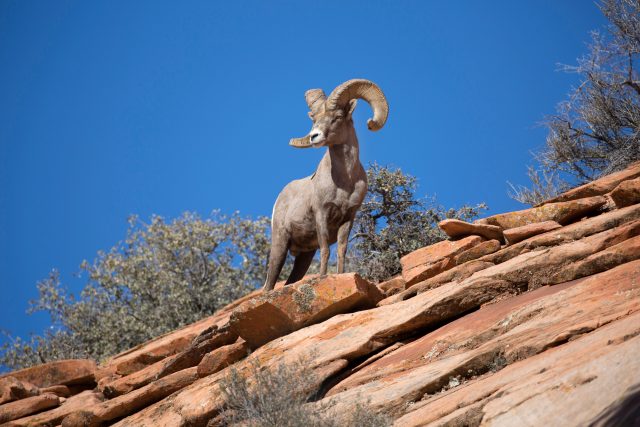Illegal Poaching Supplies an International Black Market for American Animal Parts

Most Americans are acutely aware of the things that threaten species populations and animal habitats; things like pollution, climate change, overdevelopment.
But many are simply unaware of the fact that everyday, our state and federal game wardens fight another vicious adversary that is putting additional pressure on certain species populations…
It’s Happening in America’s Backyard
From tigers in Asia to elephants in Africa, wildlife crimes only seem to make the news when it concerns rare and exotic species and high-value animal parts like rhino horns.But there’s no need to cross the ocean to find the pervasive and persistent problem of poaching and links to an international black market. Poaching for specific high-demand animal parts to feed the demand of a nefarious underworld of dealers, merchants and buyers is widespread in the U.S., its fingers extending to nearly all parts of the country.And with any criminal enterprise, it’s the money that supplies the motive. For example, the American black bear has long been poached for its hide, paws, gallbladder, and bile, mainly due to their use in Eastern medicine. (Gallbladder and bile are often used to treat diseases of the heart and kidneys.) Undercover operations have found single dried bear gallbladders fetching as much as $30,000 on the black market.
But it’s not just the American black bear that’s under siege. The horns of ram sheep can sell for more than $20,000 on the black market. The bighorn sheep, which largely resides in the area between the San Jacinto Mountains and the U.S.-Mexico border, has been on the U.S. Fish and Wildlife Service’s endangered species list since 1998. Although land development and disease have been the major contributors to the dwindling of this species, poaching is only putting more nails in the coffin. These sheep are usually found in remote areas, making it a challenge for game wardens to patrol and monitor poaching activity.
Shark fins are also highly valued in Eastern cultures, making poaching off the coast of California a major problem, despite the fact that selling or distributing shark fins is illegal under California’s Shark Fin Law. When a great deal of money is at stake, the crimes continue. A single shark fin can sell for $500 in China, where it is used to make shark fin soup, a delicacy. It is estimated that there are more than 100 million shark deaths every year due to shark finning: the practice of catching a shark, slicing off only the coveted fins, then tossing the animal back overboard to die a slow and painful death
New Laws and Big Fines in the Crackdown to Prevent Poaching
The Internet has only exacerbated the problem of poaching by creating a global marketplace in which criminals can attempt to maintain anonymity. But non-profits are teaming up with government to fight back.In 2013, the U.S. Fish and Wildlife Service (USFWS), working with organizations like the International Fund for Animal Welfare (IFAW), partnered with state agencies and international conservation law enforcement agencies to launch Operation Wild Web. In a major crackdown on violators of the Endangered Species Act, Convention of International Trade in Endangered Species (CITES), and other federal, state and international laws, Operation Wild Web uncovered endangered animals casually being offered up for sale by “virtual poachers.”
The operation revealed how otherwise innocent and innocuous social e-commerce sites were being used as a marketplace for the illegal sale of protected species, with, among many other examples, an endangered jaguar being sold on Craigslist for $19,000.
But state agencies have also stayed busy passing new legislation and have wasted no time in making efforts to enforce these laws …
New Mexico - For example, in New Mexico, game wardens with the New Mexico Department of Game and Fish investigate trophy poachers who kill many types of big game just for the head or horns, leaving the rest of the animal to rot. They investigate about 100 trophy poaching cases a year. Some of the animals targeted by poachers here include elk, bighorn sheep, ibex, and oryx.
Governor Susana Martinez signed legislation in April 2017 that now makes wasting game a felony, carrying a prison sentence of 18 months and a fine of $5,000.
Nevada - In Nevada, elk poaching is a serious issue that is met with equally serious fines and jail time. In April 2017, a man was required to pay a civil penalty of $20,000 for poaching an elk in southeastern Nevada. He was also required to serve five years of probation. Should he violate the terms of his probation, he will have to serve a 32-month prison sentence.
Oklahoma - Other states are also persistent in their efforts to curb poaching. For example, in December 2016, an Oklahoma Department of Wildlife Conservation game warden investigated a complaint of deer poaching and successfully arrested three individuals who poached eight bucks and 14 deer illegally. It was discovered that the men were killing deer just for the thrill of it.
Maine - It’s also important to recognize that not all poaching is directed at our country’s big game. In Maine, a massive undercover operation led to the arrests of poachers of baby eels. The federal investigation, known as Operation Broken Glass (baby eels actually look like shards of glass), took down a massive poaching operation.
Maine is the only major legal market in the U.S. for baby eels, but their skyrocketing prices have led to an explosion of poaching operations.
Putting Poachers Behind Bars Can Save Officers’ Lives
Unlike legal hunters, who are active participants in wildlife conservation efforts and abide by laws and regulations in place to manage game populations, poachers are criminals who act with total disregard for conservation laws and whose primary motivation is making a payday for themselves. All too often, these are violent and desperate people, and being armed with a hunting rifle when approached in a desolate wilderness area can make for a deadly scenario for officers enforcing conservation lawsIn 2016, a California game warden was shot at by two suspected poachers when he attempted to make a traffic stop. The officer was not injured. He chose to wait for backup before attempting to pursue the suspects, as he was patrolling alone in the remote area.
Just months earlier, Texas executed a man who shot and killed a game warden during a shootout nine years prior. The man was suspected of hunting illegally when a game warden spotted him and gave chase. After a 90-minute car chase, the poacher engaged the pursuing officer, shooting and killing him.
For game wardens in many parts of the country, disrupting poaching operations is the most crucial part of the job – and a crucial part of ensuring the criminal element isn’t given free run of America’s protected wilderness areas.
Related Articles
Featured Article

Wind
Cave National Park- A Unique Treasure This, the sixth smallest of all
American National Parks, is the fourth longest cave network in the world
and the first network anywhere on the planet to have been granted
National Park status (1). Located in South Dakota, it was signed into
law in 1903 by Teddy Roosevelt in recognition of its unique Continue Reading






No comments:
Post a Comment